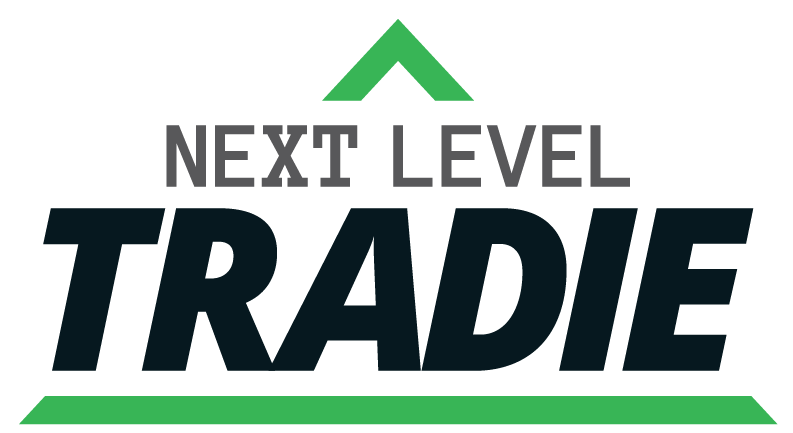

“I’VE GOT MONEY IN THE BANK, SO I MUST BE OK”
How do you really know if your trades business is OK money-wise? Well, it’s not about how much money you’ve got in the bank. It’s about how much you’ve got left, after you’ve paid everyone.
It’s easy to tell an 18 year old not to spend his first paycheck before he’s paid his bills. But when you run an entire company, there are many more factors in play. And it’s not so easy to tell what’s really yours…
THE TRAP
Our tradie mate Andrew is rapt – he’s had a great month. He has just got a whole heap of new clients sign up for work and some big jobs too, that the team can really get their teeth into.
Now he’s booked out until the end of the year and with the deposits from these jobs, there is more money in the bank then he has seen for a long time. It’s been a hard grind for the last year and it’s finally starting to pay off.
It feels great to see the bank balance looking so strong. No more grovelling to the bank anymore when cash is tight.
Already Andrew is dreaming of that new truck he’s had his eye on. It’s going to look awesome, especially when the signwriters get hold of it.
Here is the trap…
Andrew thinks to himself…
“I’ve got money in the bank, so I must be OK”
HOW A CASHFLOW CRISIS HAPPENS
Andrew decides to go ahead and pays cash to get his flash new truck and enjoys it…
…for a short time.
A few weeks later, things are starting to pile up. The GST is due, then the accountant sends him an email about $35,000 provisional tax to pay tomorrow.
He’s also reached the credit limit with his key supplier so they want payment before sending more materials to the site (materials he needs for the new jobs that are due to start). Which he needs now or he won’t have any work for his team to go on with later in the week.
The overdraft is at its limit because of the tax bills so he’s back on the phone talking to some kid at the call centre who knows nothing about his business trying to get an extension. They just want a whole lot of figures he doesn’t have right now.
Cashflow is tight again – what the heck!
Just when he thought he was getting ahead.
To top it off Jess his wife has sent him 3 angry text messages while he was in a meeting with an important client. She was at Pak N Save this morning, the Eftpos card declined so she’s heading home totally embarrassed with only half the list.
There’s going to be some fireworks tonight and not the fun kind…
Andrew is not feeling so good about that new truck…
TIMING IS EVERYTHING
Let’s rewind. Andrew’s worked hard and it’s awesome things are on the way up; he deserves it.
But before he goes ahead and buys all that extra stuff, it’s important to see how much cash is actually available in the business after everything is paid. Then Andrew won’t get into trouble a few months down the track if everything doesn’t go to plan.
Does this mean Andrew shouldn’t buy the new truck? No, he just needs to buy it at the right time. It’s about knowing your financials and it’s about timing.
Chances are, he can have his truck and the boat and overseas trip too. But he better know when he can or can’t. Or there will be some sleepless nights ahead.
Victory is so much sweeter when you don’t have a sinking feeling that your luck might be about to change.
Having the confidence you’ve got the business side and the financials fully under control?
That’s success.
The pressure is off.
Unfortunately, there have been plenty of tradies like Andrew who brought new vehicle too early and got into trouble because they ran out of cash to keep the business going.
In fact, according to Xero, 65% of failed businesses say it happened because they weren’t in control of their financials and couldn’t see what was really happening with their cashflow.
HOW YOU KNOW IF THE MONEY IS YOURS
Keeping profits and cashflow strong is not just about how much money you have in the bank now but also looking ahead to see what is likely to drain your cash going forward.
It’s about what’s left after everyone has been paid. That is the true test.
In your business, money is always coming and going. Knowing what’s yours and what isn’t makes things black and white so you can make informed decisions and eliminate those nasty cashflow surprises.
To take stock of where you are now financially and allow for those inevitable factors that suck cash out of the business, here’s are the main things you gotta keep an eye on:
Deposits on jobs not started or still in progress
This is a big one and a real trap especially for builders or any tradie who takes deposits before starting the job.
With any large jobs, you should be taking deposits and progress payments to keep cashflow right and reduce your exposure if your client at any point runs out of money.
But remember this is not your money – it’s allocated to cover materials and labour on that job. If you use this deposit money for anything else, it won’t be long before you are short of cash to pay suppliers, subbies and wages.
Profit & Loss (Financials)
Check out your monthly P&L to see how you are actually going. Print it out from Xero or MYOB or whatever you’re using.
The P&L is the main source of info you can check in on to see if you are truly making money or not month to month. If this is not looking good, there will be a reason.
Note: Make sure you include a “work in progress” figure otherwise it just won’t be accurate (this will factor in jobs you’ve incurred cost on but that you are yet to finish or invoice out, and deposits you’ve taken that you haven’t done work on or incurred any cost for yet).
If you got a $50k deposit but haven’t done any work yet, it’s going to make your P&L look way better than it is.
Cash Position
Simply put, this is the difference between what you owe and what is owed to you. In other words, the difference between your Accounts Payable (what you owe), Accounts Receivable (what clients owe you) and your Bank Balance.
You should be doing this calculation every month and be positive (not the “don’t worry, be happy” kind of positive). If it’s not cash positive, then you want to be working towards making this positive ASAP.
Taxes
Do you have enough in the bank to keep all your taxes up to date like GST and PAYE? What about Provisional and Terminal taxes and do you know when they are due? Don’t get caught out by a surprise from your accountant the day before.
Note: Good accountants will tell you well in advance.
Suppliers/Subbies
Are all your suppliers and subbies current, or are you behind on a few? Important to keep them onside so your business keeps running smoothly and materials and jobs are all on time.
Bank Loans and Overdraft
If you are paying off any loans or incurring interest charges on overdraft facilities, you want to be clearing these up before going into more debt.
Holiday Pay
Allow for holiday pay accumulated during the year, because when it gets to Christmas holidays, you will need this buffer.
Cash Reserve
You should always have a buffer (money set aside) to cover wages and overheads for a couple of months if things go quiet.
SUM UP
After looking at all of these, include them in your cashflow forecast for the next 6 months and see what money you will have left after you have paid all the bills.
If after checking these figures, Andrew is still in great shape, then awesome – he should go buy that new pickup and boat too, and really enjoy them – he’s earned it.
If Andrew is not quite there yet, that’s okay. He just needs to take a bit longer until things are set up right to avoid cashflow stress.
Or if you really need that pickup, then look at finance options over a few years so you still have plenty of cash in your business. Make sure you can cover the payments though!
KEY TAKEAWAYS
Although you might have plenty of cash in the bank, make sure you take stock and get the real picture of what cash you actually have and how much money is yours.
When you have money in the bank, it may not necessarily mean you are OK.
Areas you need to pay special attention to include:
- Deposits on jobs
- Your Profit & Loss (Financials)
- Your cash position (what’s left after all your bills are paid)
- Who you owe money to (taxes, suppliers, subbies, bank)
- Holiday pay (especially around annual holidays)
- Cash Reserve (to keep operating)
Do a 6 month cashflow and if all of these things are in line, then cashflow will stay strong and you know the money is yours to enjoy. If not, there is work to be done.
Fast track your tradie business success by avoiding the common pitfalls? Helpful free e-book for you here
GET MY FREE GUIDE: "The 11 Biggest Tradie Business Mistakes & How To Fix Them"
Avoid the common pitfalls that cost you jobs, drain your hard earned cash, and rob you of time with your family.








